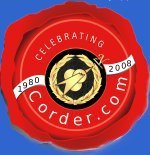

Corder Enterprises International
|
|
| The Green Datacenter |
E-Mail This Page
To a Friend.



VCP & VCIs
CP150 - Advanced Perl Programming
Course Description: Perl has evolved from its beginnings as an eclectic scripting tool for UNIX administrators into one of the most popular, influential, and widely used computer languages in history. In this course, you will learn how to fully utilize the Perl programming language.Audience: Application programmers, system administrators, web-site authors, webmasters, and UNIX/NT power users.
Prerequisites: Perl Programming and Perl application development experience. Full comprehension of the extending and embedding material will require some C or C++ programming experience.
Course Contents
Warnings Diagnostic Messages Carping, Confessing, and Croaking Strict Checks Compiler Pragmas Debugging Flags Your Perl Configuration The Devel::Peek Module The Data::Dumper Module Expert List Manipulation
The grep Operator Lists, Arrays, and List Operators Context Context and Subroutines Initializing Arrays and Hashes Reference Syntax Auto-vivification Defined Values Other List Operators Usage of map, grep, and foreach Blocks and Code References
Blocks Subroutines Subroutine Prototypes Code Refs and Anonymous Subroutines Typeglobbing for the Non-Squeamish Local (Dynamic) Variables Lexical Variables Persistent Private Subroutine Variables Closures The eval Operator The Block Form of eval The String Form of eval Block Form of eval for Exception Handling Packages
Review of Packages BEGIN and END Blocks Symbol Tables Package Variables Calling Package Subroutines Importing Package Symbols Exporting Package Symbols Using the Exporter Package The use Function AUTOLOAD and @ISA AutoLoader and SelfLoader Objects and Classes
Object-Oriented Stuff Making Perl Object-Oriented References The bless Function So, What's a Blessed Thing Good For? Calling Class and Object Methods Object Methods Writing Classes Constructors Inheritance What Perl Doesn't Do Tied Variables
Why Use tie? Tying a Scalar Inside Tied Variables untie Another Tied Scalar Example Tying an Array A Tied Array Example Tying Hashes Tie::Hash and Tie::Array Tying Filehandles What Are DBM, NDBM, GDBM, SDBM, etc? Using the DBM Modules Installing and Using Perl Modules
Laziness, Impatience, and Hubris CPAN Using Modules Installing a Perl Module Unpacking the Module Source The Configuration Step The Build Step The Test Step The Install Step Using CPAN.pm Using Module Documentation Introduction to DBI/DBD
The Old Way - DBPerls A Better Way - DBI/DBD Database Programming Handles Connecting to the Database Creating a SQL Query Getting the Results Updating Database Data Transaction Management Finishing Up DBI/DBD SQL Programming
Error Checking in DBI Getting Connected Drivers Using Parameterized Statements Statement Handle Attributes Other Handle Attributes Column Binding The do Method BLOBs and LONGs and Such Installing DBI Drivers Introduction to Perl/Tk
Tcl, Tk, Tcl/Tk, Tkperl, Perl/Tk, etc. Perl/Tk Creating a Perl/Tk Application GUI Programming Overview Adding Widgets Scrolled Widgets Configuring Widgets Menus More Fun with Menus Using FileSelect Perl/Tk Programming
Tk::Error and Tk::ErrorDialog Configuring Widgets Geometry Management Geometry Management with grid() The Frame Widget Defining Widget Callbacks Bindings Nonblocking I/O with fileevent() Tags Other Widgets Other Tk Commands Getting Tk Extending Perl with C/C++
Extending the Perl Interpreter Overview of Perl5 XSUBs Get Started with h2xs Set up the Perl Wrapper Class Write the XS Code The XS File Write Some Test Code What Do You Want? Returning Values on the Stack A Walk Through an XSUB Arguments to XSUBs Other h2xs Options Embedding the Perl Interpreter
Why Embed Perl? Embedding Perl in a C Program Compiling the Program perlmain.c Perl Data Types Macros and Functions Manipulating Scalars Memory Management Script Space Evaluating Perl Expressions Dynamic Loading Multiple Perl Interpreters Module Development and Distribution
Distributing Modules Get Started with h2xs Files Created by h2xs The Build Library (blib) Directory Unit Testing and test.pl Versions Using blib POD POD Translators Cutting a Distribution Other Niceties Makefile.PL Design and Implementation
Think First Object-Oriented Design Object-Oriented Development Library Modules Utility Programs Filters Performance Timing with Benchmark

Course
Flyer

C.E.I.
Flyer
Course
Offering
3mbAIX | HPUX | Linux | Solaris
General UNIX | Web | PerlCopywrite 1980 - 2015

